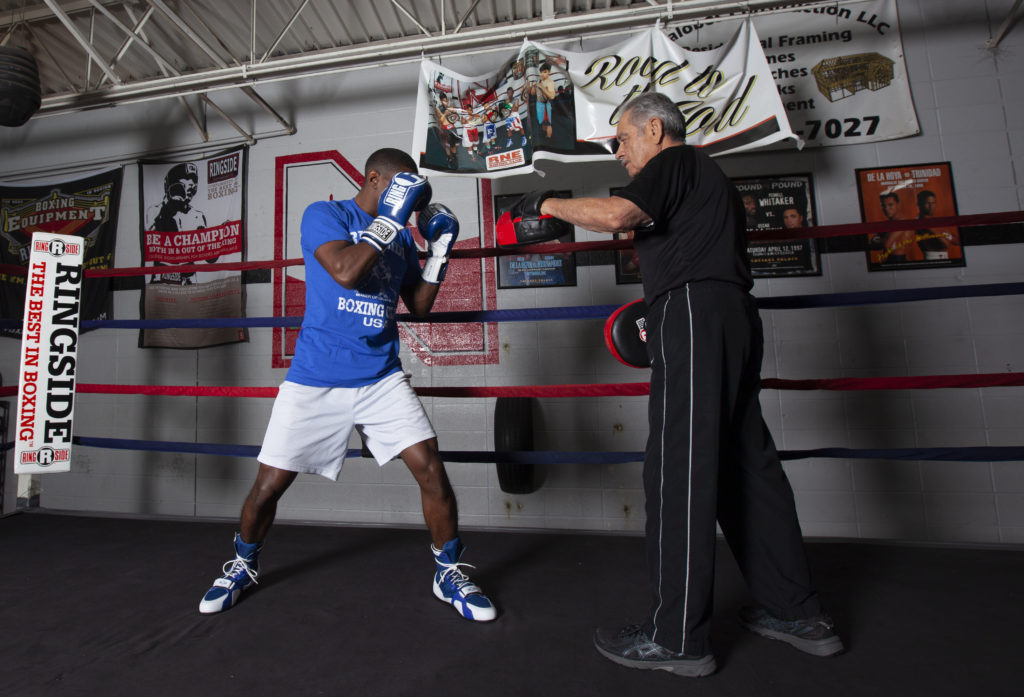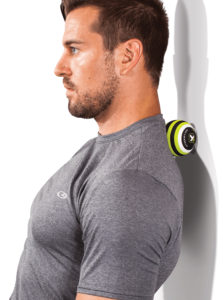
GUEST POST: To talk to you this week, we reached out to a local expert on the topic of using foam rollers and massage balls to recover after a fight or workout. Foam rolling and other forms of trigger point therapy are growing in popularity throughout the sports world. As Dr. Love shows, they are incredibly effective for treating some of the unique stresses of boxing and mma. You can reach Dr. Love at Love Chiropractic, the practice she shares with her husband, Dr. Adam Love.
When you’re in the ring or shadowboxing, maintaining a proper fighting stance keeps you ready to react, allows for fluidity of movement, and maximizes proper transference of force. However, holding that body position can also lead to fatigue and tightness in muscles throughout the body, especially in the legs and shoulders. After a hard workout or an intense competition, this tightness and fatigue can turn to pain or reduced mobility if left un-addressed.
To help reverse these issues, athletes in many sports have turned to foam-rolling and other forms self-myofascial release. In fact, focusing on release of trigger points or adhesions (small areas of tension in the muscle or fascia surrounding the muscle that impede smooth movement) has been shown to be incredibly important to reducing muscle soreness, improving flexibility and enhancing range of motion following exercise—especially high intensity workouts. An October 2018 study just showed that self-myofascial release is beneficial in reducing fatigue-induced losses of power and velocity.
Read on to learn about two of the main types of self-myofascial release exercises: foam rolling and massage ball releases. I’ve highlighted three exercises in each category that will work the most common areas of tightness in boxers and MMA fighters.

Foam Rolling
The use of a foam roller over the larger muscle groups such as the quadriceps, anterior tib
ialis, and the thoracic spine following intense exercise, such as boxing and MMA training can be a very effective intervention for enhancing joint range of motion for post-exercise performance. A study in the Journal of Strength Conditioning Research suggested that for improvements in joint range of motion, rolling for between 2-5 minutes is recommended.
Quadriceps
Your quads are the workhouse of your stance. If you’ve got a good crouch and good ring movement, your quadriceps will almost never be relaxed when you’re in the ring. Relieving that stress through a myo-fascial release exercise can significantly reduce soreness and maintain long-term mobility. Start by laying face down with the foam roller underneath your quads and perpendicular to the legs. Support your upper body on your forearms. Push yourself slowly back, at a rate of about one inch per second. When the roller reaches your hip, roll yourself slowly forward at the same rate until the roller is just above your knee. Repeat for 2-5 minutes.
Anterior Tibialis
Foam rolling the anterior tibialis (the muscle that runs along the outside edge of the shin bone) can be very beneficial for the long-term endurance of the calves and lower legs. Begin on your hands and knees with the foam roller under your shins. Make sure to engage your abdominal muscles and keep a flat back as you place more of your weight over the foam roller. Pull your knees toward your hands, while keeping your hands planted firmly on the ground, slowly moving the roller down your leg toward the ankle. Then push your knees back out until you no longer feel pressure on your anterior tibialis muscle. Then repeat.
Thoracic Extension
Foam rolling along your spine for thoracic extension will help to keep your posture tall and straight outside of the fight. While in the fighting stance, your hands are in front of you in a ready position with your head slightly flexed to keep your chin down and protected. This position, while protective and active during a fight, enhances forward rolled shoulders, increased thoracic curvature, and a promotes a forward head posture. To help counteract these long-term posture changes, lie on the ground with the foam roller underneath your upper back and perpendicular to the spine. Bend your knees and place your feet flat on the ground. Place your hands behind your head and pull your elbows apart and towards the ground as far back as is comfortably possible. Extend the thoracic spine over the roller and begin rolling slowly up and down the vertebrae.
Massage Ball
While foam rolling is great for larger muscle groups, their use over large joints is not recommended. The use of a hard massage ball would be much more beneficial to really get in deep to these muscles.
Calf
Specifically, with the calf muscles (gastrocnemius and soleus) the attachment of the muscle to the tendon becomes a weak point due to frequent explosive movements. Begin sitting on the floor with the lacrosse ball placed underneath your calf and to begin, lift your buttocks up and move back and forth along the muscle belly and at the tendon insertion.
Hip Flexors

Lie on your belly, using your forearms to prop yourself up. Place the ball at the crease that forms when you lift your hip. With small motions, move side to side as well as up and down until you find a tight spot. Don’t be alarmed if you find more than one or if most of the muscle feels tight, this muscle is kept in shortened and tight position when seated and is a weak spot for much of the population. Hold over the tight spot until you feel a release.
Trapezius
For the trapezius, place the ball between a wall and your upper back. Move the ball until you find a tight spot and hold until you feel a release. Trouble areas for a lot of people in the trapezius are right above the shoulder blade and just an inch or two towards the spine as well as just below where your neck and shoulders meet.

